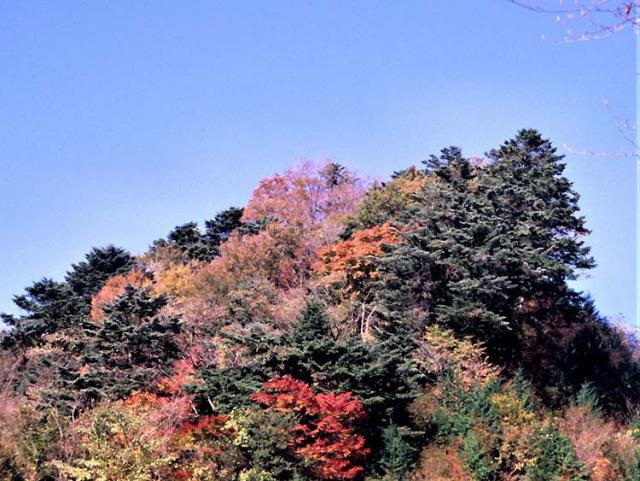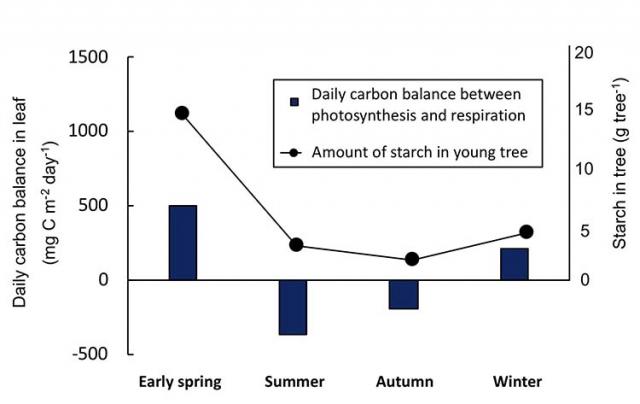Home > Research > Research Results > Research Results 2018 > Young fir trees are good handlers of their own finances–Putting earnings in the winter away for use in the summer
Update:July 17, 2018
Main content starts here.
Young fir trees are good handlers of their own finances–Putting earnings in the winter away for use in the summer
| Article title |
Seasonal changes in photosynthesis and starch content in Japanese fir (Abies firma Sieb. et Zucc.) saplings under different levels of irradiance |
|---|---|
| Author (affiliation) |
Kenzo Tanaka (a), Reiji Yoneda (b), Ikuo Ninomiya (c) (a) Department of Plant Ecology FFPRI, Tsukuba Ibaraki, Japan. (c) Ehime University, Matsuyama, Ehime, Japan. |
| Publication Journal |
Trees -Structure and Function-, 32(2):429-439, April 2018, DOI: 10.1007/s00468-017-1640-5( External link ) |
| Content introduction |
Understanding the life of young trees in the forest helps with forest regeneration and management. Momi fir (Abies firma) is an evergreen coniferous tree that forms mixed forests with deciduous broad-leaved trees. It is a canopy species that particularly dominates in Southwest Japan. In a mixed forest of coniferous and deciduous broad-leaved trees, the light environment substantially differs between the spring-to-autumn season, when deciduous broad-leaved trees grow leaves, and the winter season, when they shed their leaves. Young fir trees survive in the forest for a longer period than deciduous broad-leaved trees; however, how these trees adapt themselves to substantial changes in the light environment remains unclear. In this study, we compared young fir trees growing in different light environments, from a dark (the inside of a forest) to a bright (open bare land) environment, in terms of seasonal changes in photosynthesis and stored starch, growth increments, and other characteristics to elucidate the adaptation mechanism. Young trees growing in a bright environment, such as an open bare land, were shown to maintain carbon earnings from photosynthesis during the day more than spending by respiration in the night throughout the year. In contrast, in young trees growing inside the forest, the daytime carbon income by photosynthesis was less than the nighttime spending in the summer because of decreased photosynthesis due to low irradiance of light and increased respiration due to high temperature. However, from winter to early spring, when deciduous broad-leaved trees shed their leaves, sunlight can reach the inside of the forest, and it helped the young trees to increase their earnings from photosynthesis. Young fir trees, growing in a bright or dark place, converted these carbon earnings into starch, which was stored in the tree bodies such as roots; however, starch was mainly used for growth in young trees growing in a bright environment. Meanwhile, young trees growing inside the forest used stored starch to compensate for excessive respiration in the summer. Thus, young fir trees spend the saving stored from winter to early spring to allow them to survive for a long time even inside the forest, where it is dark in the summer, and grow into mature trees once the light environment improves because, for example, some other trees are fallen. The mechanism underlying the survival of young fir trees in a mixed forest with deciduous trees demonstrated in this study is helpful for the maintenance and management of temperate mixed forests of coniferous and broad-leaved trees.
Photograph 1: A temperate mixed forest of coniferous and broad-leaved trees
Figure 1: Daily photosynthesis and respiration volume and seasonal changes in the amount of stored starch in leaves of young trees in a dark forest |
Copyright © Forest Research and Management Organization. All rights reserved.


